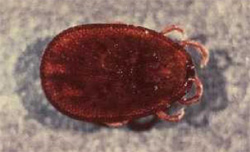Common Diseases of Backyard Poultry
The keeping of backyard poultry gives great enjoyment to many people. As more people in Victoria and other states purchase small acreages, poultry ownership is becoming a popular and economically beneficial pastime. The production of fresh eggs and meat for human consumption, plus the enjoyment they give as pets or show birds, makes poultry valuable members of many families.
Unfortunately, poultry, just like dogs and cats, may become ill from many causes. There are a few major categories of disease that commonly occur in small poultry flocks. These include external and internal parasites, Marek’s disease, respiratory disease, nutritional problems, reproductive diseases and fowl pox.
Poultry owners also need to be aware of those diseases exotic to Australia. Exotic diseases pose a risk to commercial poultry flocks if they enter Australia, so poultry keepers need to be aware of these diseases, and report them to the Department of Primary Industries promptly if suspected.
External Parasites

Poultry can carry a large variety of parasites on their bodies. These range in size from large, blood sucking ticks up to 1cm in size, down to the microscopic scaly face (and leg) mite that is less than 0.5mm in size. Other external parasites that are commonly encountered are the stickfast flea (small, black fleas on the comb that do not move), and lice (small, white insects that move rapidly through the feathers).
External parasites generally cause mild clinical signs such as feather damage, anaemia and irritation, but they may also carry severe, life threatening diseases such as tick fever.
Backyard poultry should be examined regularly, and treated for external parasites every two to three months. Products to treat these diseases can be recommended by your veterinarian.
Internal Parasites
Backyard poultry also carry a wide range of internal parasites. These range from large roundworms (Ascarids) that are visible with the naked eye; to small, single celled organisms only visible under a microscope (Coccidia, Trichomonas, and Giardia). Internal parasites attack the lining of the intestine, and absorb nutrients from the gut that the bird should be using for maintenance of its own body and production of eggs. Worms (and other internal parasites) are spread from bird to bird by the ingestion of eggs from the faeces of infected birds. Regular removal and cleaning of faeces from the bird’s enclosure will result in less worm eggs in the environment, and less chance of worms spreading from bird to bird.
Signs of internal parasitism may include weight loss, pale combs or diarrhoea.
Your local veterinarian will be able to look at faeces under the microscope, and advise you which type of worms and protozoan parasites are present by the type and number of eggs they observe in the faecal sample.
Some types of worms, such as Capillaria, are more difficult to treat than others. Your veterinarian will be able to advise you of a suitable treatment that is specific for the parasites they observe. It is important that withholding periods for treatments are observed. This requires that eggs and meat from birds treated with certain drugs be discarded for a period of time after the drug has been used. This prevents humans ingesting the drugs the chickens were treated with via the eggs or meat. Make sure you check the exact withholding period with your veterinarian, or on the label of the product.
Marek’s Disease
Marek’s disease is a viral infection that only affects poultry. The virus is spread from bird to bird in feather dander and dust. It lives in the environment for long periods, and can spread between properties on people’s clothes and on shared equipment. Birds are usually infected at a young age, but may not show signs of disease until some months later.;
The virus that causes Marek’s disease attacks the white blood cells of the bird, and results in cancer. These cancers most commonly affect the nerves and cause paralysis. Usually, the legs are affected, but the tumours may also affect the nerves in the wings and neck.
Birds may also develop tumours in the body. As they grow, these tumours may cause a number of signs including weight loss, diarrhoea, ill thrift, and difficulty breathing.
A vaccine should be given to birds at one day of age. It is recommended that all birds be vaccinated, even though the vaccine is not as effective as it used to be. This is due to the virus that causes the disease mutating slightly over time. Most large hatcheries vaccinate their chicks, so birds purchased from them should be protected, and vaccine is available at a reasonable cost for birds hatched privately.
Leucosis
Avian leucosis is also a viral disease affecting chickens which causes tumours or cancers. These tumours occur in older birds than those affected by Marek’s disease, usually more than 6 months old. It causes listlessness and loss of weight and the bird eventually dies.
The viruses affect the white cells and tumours usually appear in the liver and spleen but also in other sites. Sometimes the tumour appears as white lumps, at other times the liver and spleen appear larger than normal.
The viruses are transmitted through the egg and commercial producers attempt to eliminate it from their strains of birds. There is very little that a poultry owner can do except keep the bird comfortable and destroy it when life becomes unpleasant for it.
Respiratory Disease
There are many causes of respiratory disease in poultry. Respiratory signs such as coughing, sneezing and discharge from the eyes and nostrils can be caused by parasites (such as the gapeworm, Syngamus trachea), dust, high ammonia levels, or a variety of bacteria or viruses. In all cases, a veterinarian with experience in poultry disease must diagnose the exact cause, particularly if mortalities occur. Some of the respiratory viruses such as Infectious laryngotracheitis virus (ILT), Newcastle disease and Avian influenza are notifiable or exotic diseases, and must be reported to a Government Veterinarian or Animal Health Officer if they are suspected. Treatment will depend on the cause of the respiratory signs. For some viral causes such as ILT, vaccination is recommended.
Fowl Pox
Another viral infection of birds is fowl pox. This disease is spread by biting insects and sometimes by fighting. The virus enters the body through a scratch or scrape, and raised scabs form on the scratch and surrounding areas particularly noticeable on the combs and wattles. Scabs can also form in the mouth and throat. Most cases improve without treatment, although some birds become ill from secondary infection. Birds that recover are immune for life.
Prevention is again the best idea, and vaccination is available, although this may need to be done every few years to give complete protection.
Nutritional Deficiencies
Many small flocks of birds are fed only table scraps. This diet is not sufficient to meet the nutritional demands of growing birds or layers. Common deficiencies include calcium (resulting in poor bone growth and rickets), energy (poor growth, weight loss, poor egg production), and vitamin A (poor skin and feathering). Formulated diets are available for all stages of a hen’s life, (starter, grower and layer) and these should be fed in conjunction with table scraps, fruit and vegetables to form a balanced diet.
Reproductive Problems
Commercial birds are bred to lay for only one or two laying seasons. If they are then sold to backyard producers for extended laying, they are prone to reproductive problems. This includes egg binding (where the egg is unable to be passed out of the bird), metritis (inflammation of the oviduct and shell gland), and yolk peritonitis (free yolk in the abdominal cavity, leading to infection). Affected birds stop laying eggs, are depressed, stop eating and eventually die. They often develop a swollen abdomen, and may have respiratory difficulties. Surgery by a veterinarian is possible to resolve these conditions, however, the surgery results in the bird being unable to lay eggs. Hence, it is reserved only for pet birds.
Exotic Disease
Exotic diseases are those not normally found in Australia, but which pose a threat to Australia’s commercial poultry flock. Newcastle disease and Avian influenza are the major exotic diseases of poultry.
Signs of Newcastle disease range from mild respiratory signs to very severe depression, drop in egg production, diarrhoea, collapse and nervous system signs. Death rates can be up to 100%!
Avian influenza often appears suddenly, and birds die quickly. Diarrhoea, depression, decreased egg production, swollen and discoloured wattles and respiratory signs may all be observed.
You can prevent your birds becoming infected with these diseases by limiting their exposure to wild birds and waterfowl that can carry these viruses. Preventing overseas visitors who may be inadvertently carrying the virus, from accessing your birds and refusing to accept birds or eggs that may have been imported will also decrease the chances of your birds becoming infected. If you at any time suspect exotic or notifiable disease in your birds, call your local Animal Health Officer, or District Veterinary Officer, or the Disease Watch Hotline on 1800 675 888.
Further Information
Further information about poultry can be obtained from Animal Health staff at your nearest DPI office, your veterinary practitioner or on the Department of Agriculture website.
References
Doneley, B. (2001) Common Problems of Backyard Poultry. Australian Birdkeeper vol 14, 646-648.
Acknowledgements
The original author of this information note was Susan Bibby and the previous version was published June 2002.
The advice provided in this publication is intended as a source of information only. Always read the label before using any of the products mentioned. The State of Victoria and its employees do not guarantee that the publication is without flaw of any kind or is wholly appropriate for your particular purposes and therefore disclaims all liability for any error, loss or other consequence which may arise from you relying on any information in this publication.
Note Number: AG1012
Nicky Stone, Ballarat
